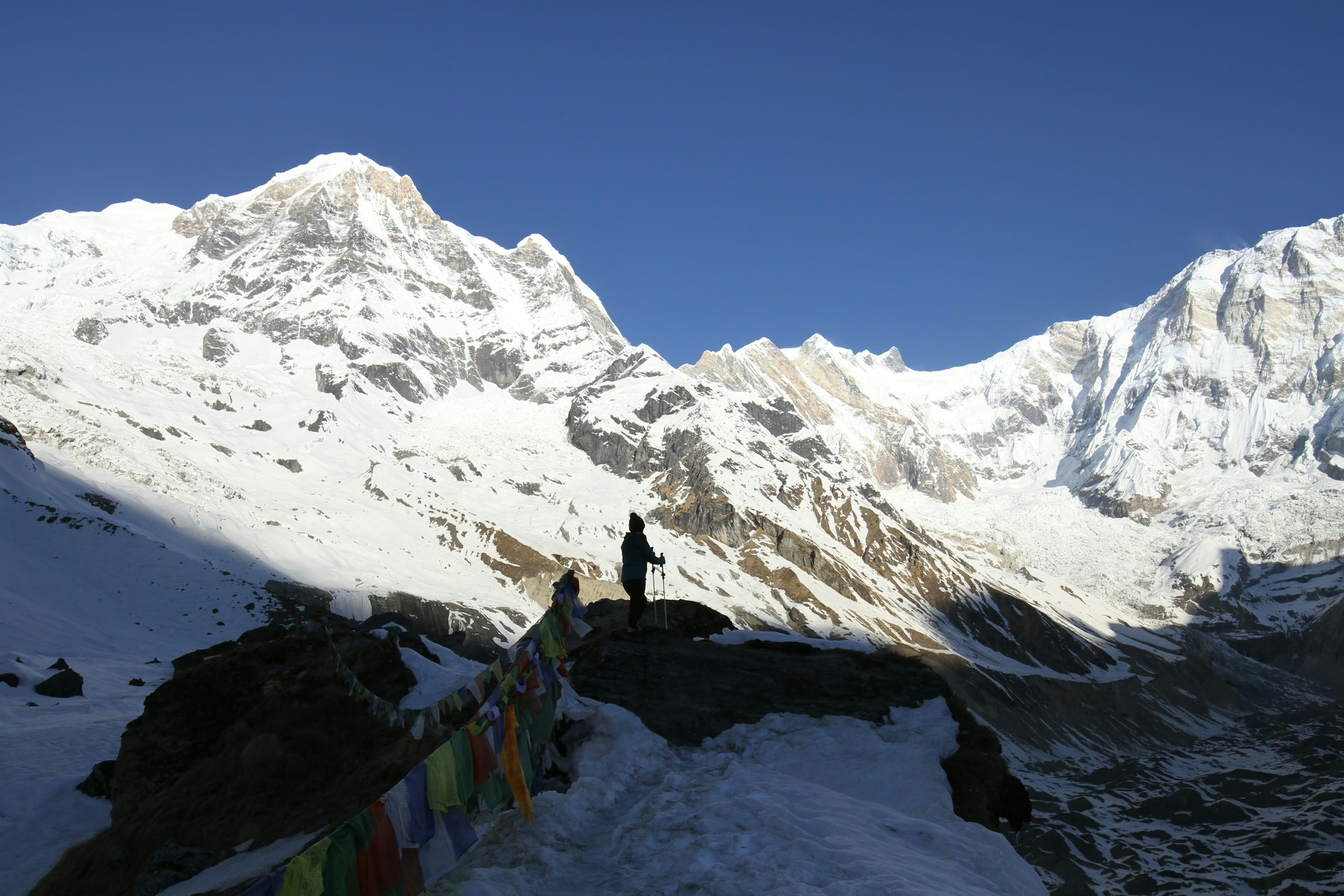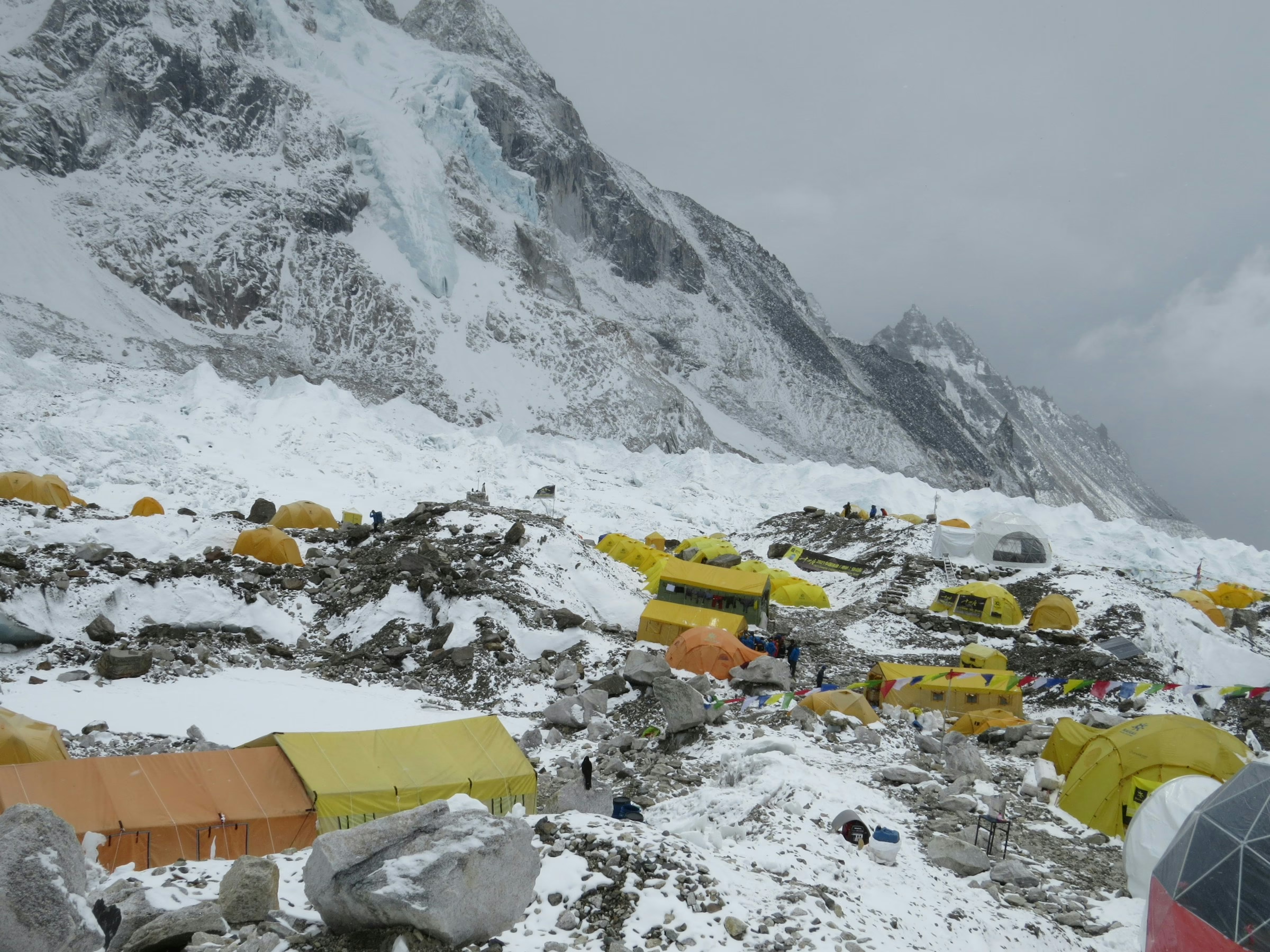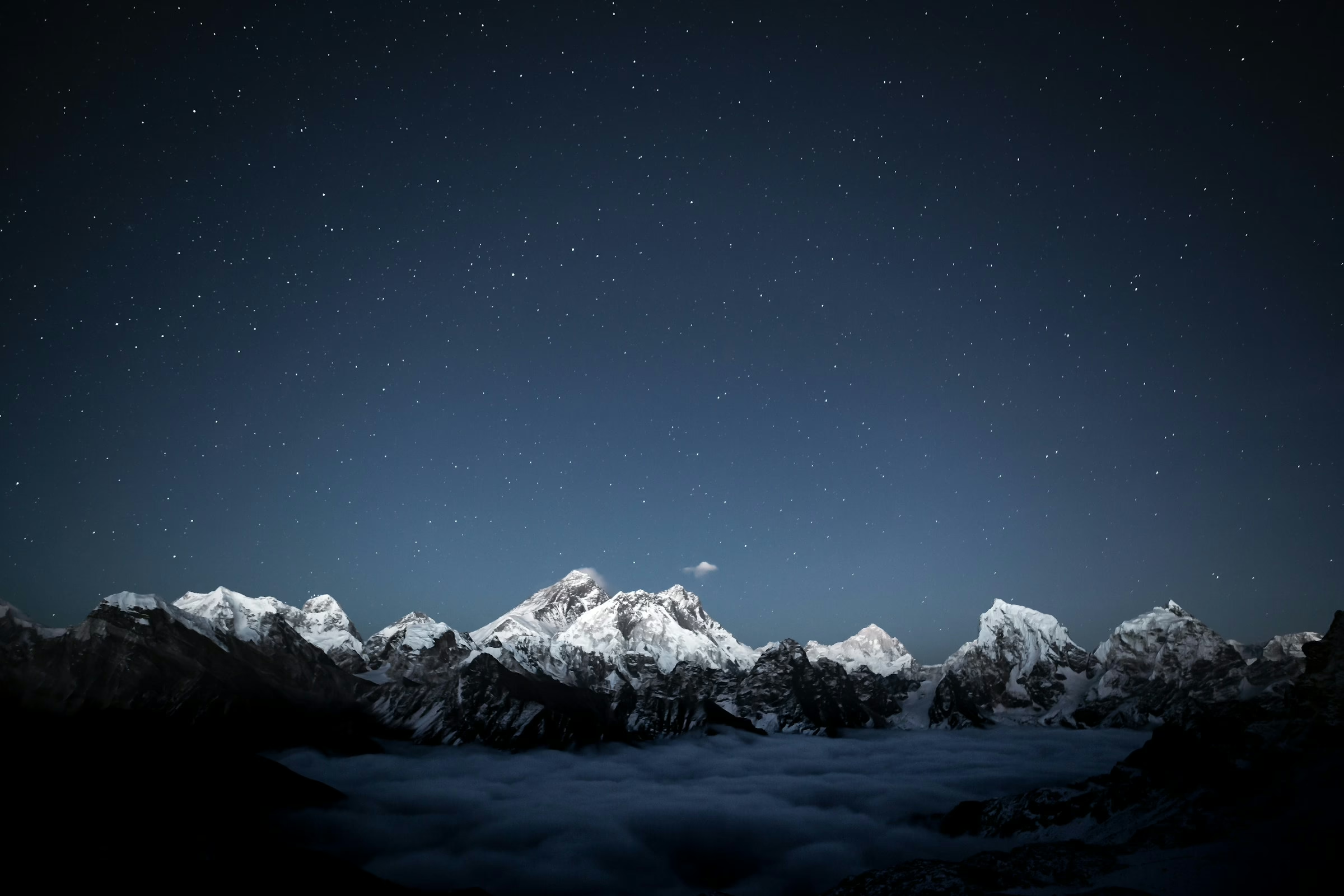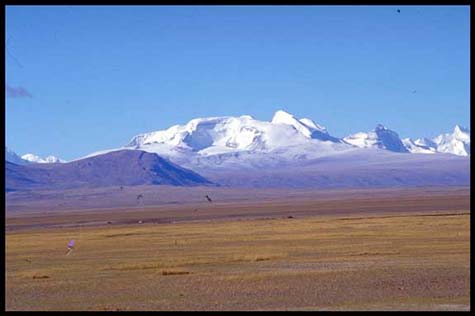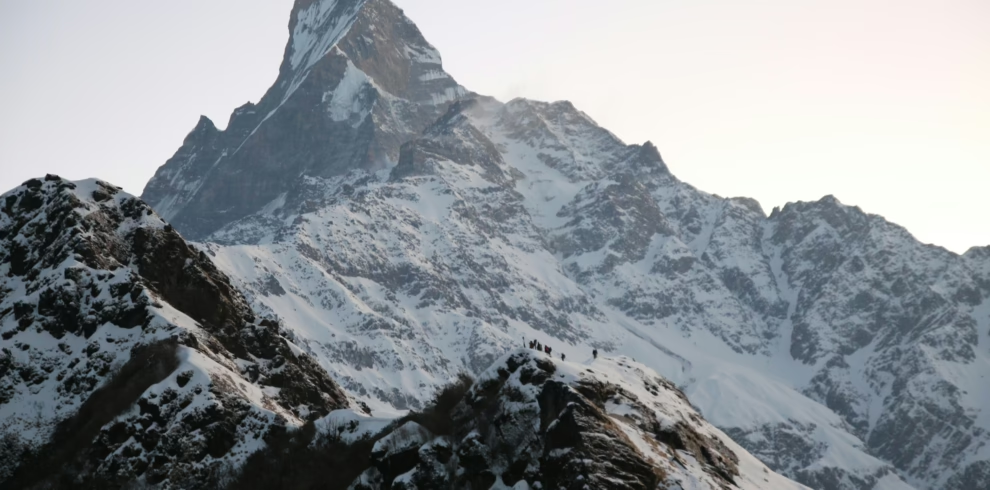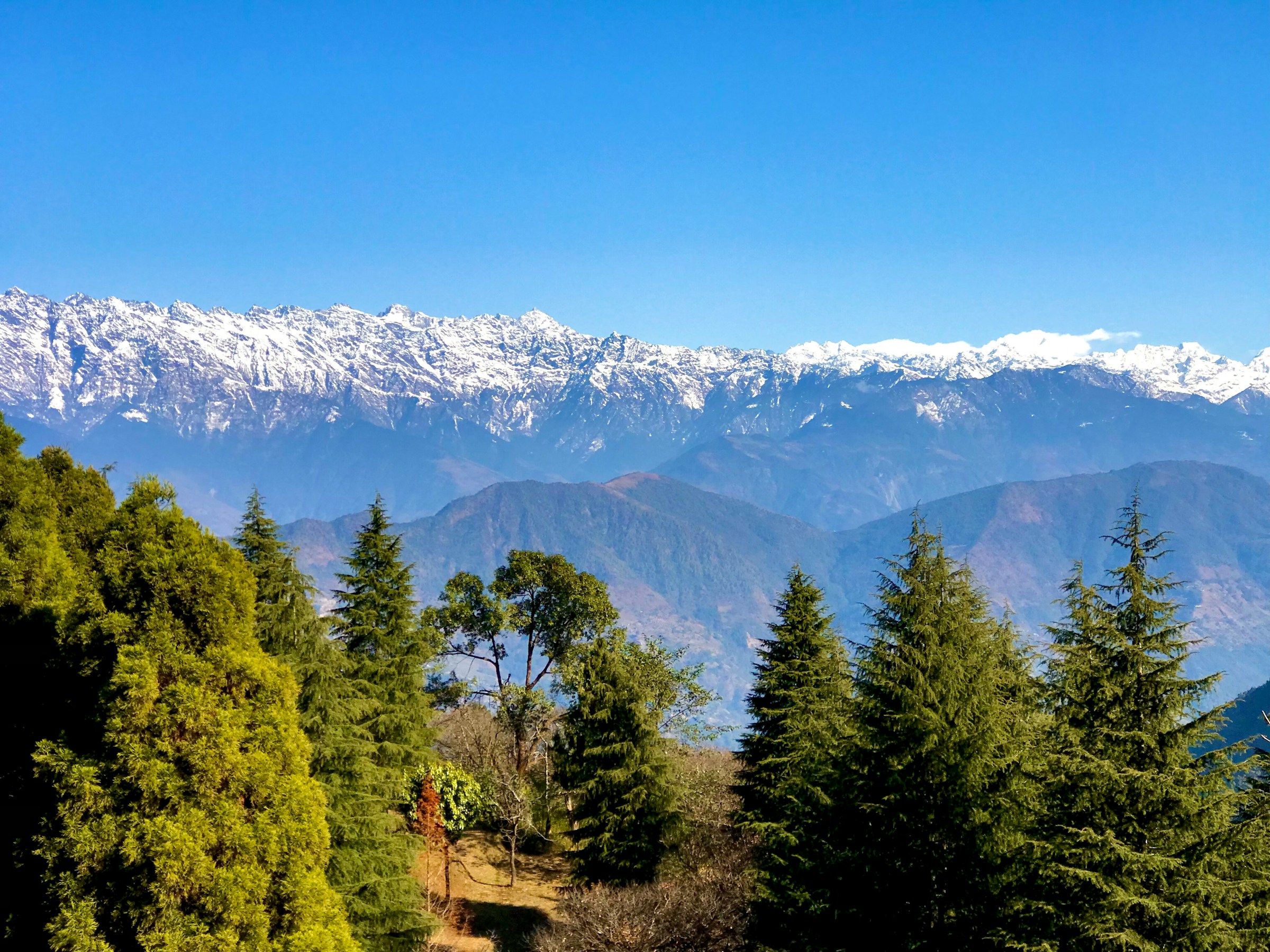Embark on one of the most demanding and exhilarating treks in the Himalayas—the Everest High Passes Trek Clockwise . This bold adventure pushes your limits while immersing you in the raw beauty of the high-altitude wilderness. Traversing in a clockwise direction, you’ll journey through an awe-inspiring mix of barren landscapes, icy conditions, and the resilient spirit of life at extreme elevations.
This route links the three formidable passes of the Everest region—Renjo La, Cho La, and Kongma La—each offering unforgettable panoramas of towering Himalayan giants. Gaze out at the legendary peaks of Everest, Lhotse, Makalu, Cho Oyu, and Ama Dablam, standing proud against the sky.
Beyond the mountains, this trek is a cultural journey into the heart of Sherpa country. You’ll explore remote Sherpa villages, experience their warm hospitality, and gain insights into their mountain lifestyle and legendary mountaineering heritage.
Along the way, marvel at the surreal beauty of Gokyo Valley, its shimmering Gokyo Lakes, and the vast Ngozumpa and Khumbu Glaciers. Walk through lush rhododendron and pine forests, cross roaring rivers in the Dudh Koshi Valley, and witness the pristine wilderness of Sagarmatha National Park—a UNESCO World Heritage Site.
Challenging yet deeply rewarding, the Clockwise Everest High Passes Trek is more than just a trek—it’s a journey of endurance, discovery, and breathtaking Himalayan majesty.
18 days / 17 nights Everest High Passes trip
Discover Stillness in Everest Region
Highlights
- Scenic 45-minute flight from Kathmandu to Lukla
- Cross three dramatic high passes: Kongma La (5,535m), Cho La (5,420m), and Renjo La (5,464m) for panoramic Himalayan views
- Witness the beauty of Gokyo Valley and its five glacial lakes, with a hike to Gokyo Ri
- Experience one of the most thrilling and challenging treks in the Everest region
- Immerse yourself in Sherpa culture and Himalayan mountain life
- Enjoy the best views of Mount Everest and the Khumbu Glacier (4,900m) from Kalapatthar (5,545m)
- Discover vibrant cultural elements like prayer wheels, colorful prayer flags, Mani stones, and suspension bridges
- Encounter diverse Himalayan wildlife, including musk deer, colorful pheasants, snow leopards, and Himalayan Thar
- Visit UNESCO World Heritage Sites and ancient monasteries along the route
- Take in breathtaking views of Ama Dablam, Lhotse, Nuptse, Pumori, and other iconic peaks
Itinerary
Upon your arrival at Tribhuvan International Airport, our representative will greet you and transfer you to your hotel in a private tourist vehicle. Once you're settled at the hotel, we will schedule a trip briefing at the hotel lobby or restaurant.
Your clockwise Everest High Passes Trek begins with a tourist bus ride to Ramechaap where you will take a scenic 45-minute flight to Lukla, offering breathtaking views of the Himalayas. Upon arrival at Tenzing-Hillary Airport, our experienced Sherpa team will greet you and lead the trek to Phakding. The trail follows the east bank of the Dudh Koshi River, descending past the Kusum River. It's important to pace yourself and allow your body to adjust to the altitude. After a short trek, you'll reach Phakding and spend the night at a local Sherpa-run teahouse.
On your way to Namche, you’ll pass through beautiful Sherpa villages like Bengkar, Monjo, and Jorsale. The trail from Phakding to Namche features several uphill and downhill sections. While the journey can be tiring, the fresh air, stunning views, and goal of reaching the summit will keep you motivated. At Bengkar, you’ll cross the Dudh Koshi River and enjoy views of snow-capped peaks like Kusum Kanguru, Thamserku, and others. After passing a few villages, you’ll reach the Sagarmatha National Park checkpoint, where your permits will be checked. Continue along the riverbank until you reach the junction of the Dudh Koshi and Bhote Koshi rivers. From there, cross a suspension bridge to reach Namche Bazaar. Once there, you’ll be rewarded with breathtaking views of Everest, Lhotse, Nuptse, Ama Dablam, and Taweche.
"Today is a rest and acclimatization day in Namche for the Clockwise Everest High Passes Trek. Namche Bazaar, a lively town in the Khumbu region, offers amenities like ATMs, internet cafes, restaurants, and bakeries. You can visit nearby viewpoints such as Thame or Khunde, explore the local area, or visit the Tourist Visitor Center to learn about Everest climbers and Sherpa culture. A short trek will also take you to the Everest View Hotel, where you can enjoy stunning views of Everest, Ama Dablam, Lhotse, Nuptse, Cho-Oyu, Thamserku, and more. After a day of exploration, you’ll return to Namche, passing through museums, galleries, and Sherpa villages.
Today, you'll trek from Namche Bazaar toward Thame, following the Bhote Koshi River, and passing through rhododendron and pine forests. Along the way, you'll visit the mud-plastered stupa in Phurte. The next stop is Thamo, home to the Thamo Gompa. From here, the trail descends sharply to the Khumbu Hydroelectric Plant before reaching Thame, located at the mouth of the Khumbu Valley. Thame offers stunning views of peaks like Teng Kangpoche and Kwangde, as well as the Nangpa La Pass leading to Tibet. Thame is also historically significant, being the home of renowned climbers such as Tenzing Norgay, the first to summit Everest, and Appa Sherpa, who reached the top 21 times.
Your clockwise Everest High Passes Trek begins today from Thame, heading north to Marulung. After visiting the monastery in Thame, you'll start the trek toward the first pass. Along the way, you'll pass through the scenic villages of Thambuteng, Hungmo, and Taranga, following the path above the Bhote Kosi River. The route takes you through yak grazing fields and sparse landscapes before reaching the wilderness area of Marlung.
Today's Everest Clockwise High Passes Trek takes you to Lumde, near an ancient trade route that connected Tibet and Khumbu. You'll diverge from the northeastern Tibet border road and pass through several traditional Himalayan villages that blend seamlessly with the surroundings. The climb to Lumde offers stunning views of the Himalayan range, including Renjo La Pass and Kyajo Ri. After a few more hours of walking, you'll reach Lumde, a small settlement surrounded by breathtaking snow-capped mountains.
Crossing Renjo La Pass will be one of the most thrilling days of your trek. The hike starts easy but becomes challenging as you approach the pass summit. Leaving Lumde behind, you’ll head clockwise toward the Gokyo Lakes. Depending on the season, you may see yak herding along the way. Once you reach the pass, enjoy breathtaking views of Everest, Lhotse, Makalu, and Cho Oyu. After descending to Dudh Pokhari, the third lake in the Gokyo valley, you’ll reach Gokyo village, located by the lake. After a short break, you can hike up the ridge for stunning views of the highest freshwater lake system in the world.
Early in the morning, you'll trek to Gokyo Ri for a stunning sunrise view of Mount Everest and the surrounding Himalayas. Afterward, head back to Gokyo for breakfast. The clockwise trek along the rocky slopes of the Everest High Passes is challenging. At the end of the glacier, you'll encounter a beautiful frozen lake, marking the start of the lateral moraine. From here, continue up the moraine’s scree slope to Thangnag, passing the second lake and the moraines of the Ngozumba Glacier. After a few hours of walking, you'll reach Thangnag, a peaceful spot perfect for resting before crossing the Cho-La Pass.
"Today, you'll cross the Cho La Pass, the second high pass on the Everest High Passes Clockwise Trek. While not particularly difficult, the pass is steep and requires crossing a glacier on the eastern side, with frozen rocks making the terrain tricky. Starting from Phedi, you'll ascend through a narrow, rocky valley, with the views improving as you climb. At the top of Cho La Pass, marked by prayer flags, you'll pass by a frozen lake and enjoy views of peaks like Kyajo Ri, Tengkangpoche, Numbur, and Kangchung. After crossing the pass, the trail descends sharply to Dzongla, passing through pine forests and crevasses. From Dzongla, you'll have wide-angle views of Lobuche, Mt. Cholatse, Mt. Ama Dablam, and the Pheriche settlement in the distance. A short trek will bring you to Dzongla.
After breakfast, you'll continue the Everest High Passes Trek Clockwise towards Gorakshep. The trail follows the moraine near Chola Lake, where the paths of the three passes and the main Everest Base Camp trail meet. From the intersection, head north across a fragile moraine to Lobuche, passing several memorials to climbers lost in the area. The route through Imja Khola Valley is scenic and enjoyable. As you approach the Changri Glacier's terminal moraine, follow the winding path between the mountainside and the Khumbu Glacier. After crossing the moraine, you'll reach Gorak Shep, at the base of Kala Patthar, where you'll be treated to views of Pumori, Lingtren, Khumbutse, and Changtse. Settle into the lodge in Gorak Shep and enjoy some time to relax.
Today, you'll reach Mount Everest's base camp, the highest point on Earth. After breakfast in Gorakshep, you'll follow the trail along the Khumbu Glacier's moraine to the base camp, located below the Khumbu Icefall. The route includes rocky terrain, steep paths, and thin mountain air. A moving prayer flag marks the base camp. Enjoy some free time to take photos and celebrate reaching this major milestone in the Everest High Passes Trek. Afterward, retrace your steps back to Gorakshep and then to Lobuche.
"Today, you will cross the third and highest pass of the Everest High Passes Trek, Kongma La Pass, considered the most challenging of the three. Starting in Lobuche, your trek ends in Chhukung. The ascent to Kongma La is gradual, passing frozen lakes along the way. A crane wrapped in a mummy marks the pass. From here, you’ll enjoy views of Lhotse, Lhotse Shar, Makalu, Baruntse, and Ama Dablam. Afterward, you will descend into the Nigyang Khola Valley and reach Chhukung, a village used by Sherpas as a yak pasture. Recently, Chhukung has gained popularity for acclimatization and trekking peaks. You'll be greeted with stunning views of Island Peak and Amphu Lapcha before arriving at your resort in Chhukung before dusk.
"After breakfast in Chhukung, the trek continues toward Chubejung Kharka, rejoining the Everest High Passes Clockwise Trail after passing Bibre. Following the Imja River, you'll head to Dingboche, then take the turnoff to Pheriche and descend to Orsho. From there, you'll follow the west bank of the Imja Khola down to Somare. After Pangboche, the trail climbs past the monastery and then descends steeply to Deboche. A steady uphill walk through the forest leads to Tengboche. Upon arrival, you’ll check into the lodge and spend the rest of the day exploring Tengboche Monastery and enjoying panoramic views of Tawache, Everest, Nuptse, Lhotse, Ama Dablam, and Thamserku. You’ll return to the lodge before dusk.
"Today, you’ll descend along the Dudh Koshi River, passing scenic waterfalls and rhododendron forests. The trail winds through pine woods, where musk deer are often seen in the early morning, before reaching Namche. In Namche, you may encounter Tibetans, highland Sherpas, and lowland porters. Just before Larja Dobhan, there’s a final opportunity to glimpse Everest and Lhotse. From Namche, the path descends through pine forest to Larja Dobhan, then briefly drops below the bridge before following the Dudh Koshi River. After recrossing the river, a flat trail leads to Jorsale. From there, the route ascends gently, then climbs steeply for a short distance to Monjo.
From Monjo, the trail descends briefly before crossing the Dudh Koshi via a suspension bridge and continuing to Benkar. After Benkar, it winds through gentle ups and downs along the Dudh Koshi Valley to reach Phakding. Beyond Phakding, a short but steep climb passes several Buddhist monuments in Ghat village. A brief ascent to Thado Koshi is followed by a descent and the final long suspension bridge of your Everest High Passes Clockwise Trek. After crossing, the trail climbs gradually to Chablung, then branches toward Lukla. It continues through a scrub forest above the school and houses of Chauri Kharka, before a final 30-minute ascent brings you to Lukla.
It's time to bid farewell to Nepal’s Khumbu region. Sherpas will transport your bags to the airport, while guides manage check-in formalities. Enjoy a final meal in the region before boarding your return flight to Kathmandu. Upon arrival, you’ll be transferred to your hotel. Use any remaining time to explore Kathmandu’s vibrant markets. In the evening, gather for a farewell dinner to reflect on the trek and share feedback.
Today marks the end of your Everest High Passes Trek (Clockwise). A Green Valley Nepal Treks representative will assist you with your transfer to the airport for your scheduled flight. If you wish to extend your stay, we can help make the necessary arrangements. For those with evening departures, there's time for last-minute shopping for souvenirs or gifts.
Includes/Excludes
Cost Includes
- Airport pickup on arrival in Kathmandu
- 2 nights’ accommodation in a 3-star hotel in Kathmandu with breakfast
- All required permits for the Three High Passes Trek
- 15 nights of twin-sharing tea house accommodation during the trek
- Three meals a day (breakfast, lunch, and dinner) during the trek
- Trekking duffel bag for your gear
- English-speaking, eco-trained guide with first aid training
- One-way flight from Kathmandu to Lukla with airport transfers
- Return flight from Lukla to Kathmandu with airport transfers
- Staff insurance, fair wages, food, accommodation, and equipment
- Oximeter for monitoring oxygen saturation and heart rate (for altitude sickness prevention)
- Purified drinking water (Ef-Chlor tablets)
- Free luggage storage at Green Lotus Trekking during the trek
- Certificate of achievement (upon request)
- Farewell dinner at a traditional Nepali restaurant in Thamel
- Airport transfer for final departure
Cost Excludes
- International airfare, travel insurance, and Nepal visa
- Lunch and dinner in Kathmandu
- Porter service (available on request; one porter recommended for every two trekkers)
- Tips for guide and porter (expected but optional)
FAQs
No prior trekking experience is required, but you should be in good physical shape, enjoy walking, and be able to adapt to high altitudes. We recommend starting physical training—such as walking, running, or gym workouts—at least three months before your trip. Being fit will make the trek more enjoyable. Our itinerary includes ample acclimatization time.
Yes, bottled water is widely available, but some areas ban plastic bottles. It’s best to carry a reusable bottle that can be filled with boiled or filtered water. We also recommend using water purification tablets or drops, which can be brought from home or bought in Kathmandu.
Yes, Wi-Fi is available in some areas, but the connection is often weak or unreliable due to the mountainous terrain.
Yes, vegetarian meals are widely available at tea houses. We encourage trekkers to stick to vegetarian options to reduce the risk of food poisoning, especially at high altitudes where meat is not always fresh.
If someone falls ill, the guide will assess whether they should continue or descend to a lower altitude. In severe cases, the individual may be evacuated to Kathmandu via air ambulance. An assistant will accompany the sick trekker, while the rest of the group continues as planned.
We recommend keeping your trekking bag under 15 kg. Each porter carries a maximum of 30 kg—two clients’ duffel bags. For the Lukla flight, the luggage limit is 15 kg, including your hand baggage. Extra charges apply for overweight luggage.
Weather in the mountains can cause flight delays or cancellations. We recommend adding 2–3 buffer days to your itinerary. Flights are usually rescheduled for the next available day. If you’re on a tight schedule, a helicopter transfer can be arranged at your own expense.
This trek is more challenging than the standard Everest Base Camp Trek due to its altitude and terrain. However, with Green Lotus Trekking, you’ll be guided by experienced professionals who will support you throughout the journey.
Cash is essential. While a few places in Lukla and Namche may accept credit cards, most tea houses and shops do not. We recommend exchanging currency or withdrawing local cash in Kathmandu before the trek.
Most tea houses offer Western-style toilets. Lower-altitude lodges often have private bathrooms and hot showers. At higher elevations, you may need to share basic facilities or use outdoor squat toilets. In extreme cold, indoor plumbing may freeze. Always carry toilet paper and hand sanitizer.
Your 18-day Everest High Passes Trek Clockwise begins with a stunning 45-minute flight from Kathmandu to Lukla, followed by a trek to Phakding. After crossing several suspension bridges, you’ll reach the vibrant Sherpa hub of Namche Bazaar. Following a rest day for acclimatization, the journey continues to Thame and then Lumde via Marulung.
From Lumde, you’ll cross the first of three high passes—Renjo La—to reach the scenic Gokyo Valley. A short hike to Gokyo Ri rewards you with breathtaking views of Everest, Cho Oyu, Lhotse, and Makalu. You’ll then cross the Ngozumpa Glacier to reach Thangnag, and from there, trek over Cho La Pass to Dzongla.
Continuing to Lobuche, you’ll pass memorials honoring climbers who lost their lives on Everest. The trail then leads to Gorakshep, the launching point for your visit to Everest Base Camp. Afterward, you’ll return to Lobuche and trek to Chhukung via the third pass, Kongma La.
The descent takes you through Tengboche, Namche Bazaar, and Monjo, before returning to Lukla, where a flight will bring you back to Kathmandu—marking the end of your unforgettable adventure.
Green Lotus Trekking offers this Clockwise Everest High Passes Trek at competitive rates with top-notch service. Our experienced Sherpa guides and porters are dedicated to ensuring your safety, comfort, and satisfaction throughout the journey. Join us for this incredible Himalayan experience in 2025 or 2026 with our professional team.
Benefits of Booking the Clockwise Everest High Passes Trek with Us
- Complimentary international airport pickup and drop-off
- Detailed map of the Everest High Passes Clockwise Trek
- Use of an oximeter to monitor blood oxygen levels
- Access to a basic medical kit for emergencies
- Free storage for excess luggage at our office during the trek
- Sleeping bags provided if needed
Preparation for the Clockwise Everest High Passes Trek
Before embarking on the Clockwise Everest High Passes Trek, it’s important to be both physically and mentally prepared. If you’re new to trekking, begin building your fitness through regular running, cycling, or morning walks several weeks—or ideally months—before your trip. Prior hiking or climbing experience is highly recommended for this demanding trek.
The trail’s highest point is Everest Base Camp at 5,364 meters, and the route includes steep ascents and descents through terraced fields and traditional Sherpa villages. You should be in excellent physical condition and ready to walk 5–6 hours per day, sometimes more.
Mental resilience is equally important, as high-altitude trekking can involve uncertainty, discomfort, and fatigue. We strongly recommend consulting your doctor—especially if you have any respiratory conditions—before booking. Please share a copy of your medical report with us when planning your trek.
Useful Information for Everest High Passes Trek Clockwise
Best Season to Trek
The best time for the Clockwise Everest High Passes Trek is during spring (March to May) and autumn (mid-September to November). These seasons offer dry, clear weather with warm days and cold nights—ideal for trekking and mountain views. Spring brings colorful rhododendron blooms and a bustling Everest Base Camp filled with climbers and Sherpas. Autumn skies are crystal clear after the monsoon, offering some of the best visibility, though trails can be busy due to high season.
Meals on the Trek
Tea houses along the trail offer a variety of meals prepared by locals.
- Breakfast: Cereal, porridge, muesli, Tibetan bread, chapati with cheese, oatmeal, pancakes, French toast, and hot beverages.
- Lunch: Sandwiches, spring rolls, burgers, thukpa (noodle soup), dal bhat, momos (dumplings), macaroni, spaghetti, sherpa stew, soups, yak steak, and potatoes.
- Dinner: Similar to lunch, with more hot meal options like ramen, rice with curry, and additional desserts. Drinks (hot and cold) are also available.
Accommodation
Accommodation is in basic but comfortable tea houses. Rooms typically have 2–3 single beds, warm blankets, and shared toilets. Solo female trekkers are offered private rooms at no extra cost. We ensure the best available rooms with scenic views throughout the trek.
Trek Difficulty
This trek is physically and mentally demanding. You’ll be hiking 5–6 hours daily across steep, rugged, and high-altitude terrain above 4,000 meters. Prior trekking experience is highly recommended. Altitude sickness is a serious risk, and the trail includes steep cliffs, rocky paths, and remote areas. Strong fitness and mental resilience are essential.
Travel Insurance
Comprehensive travel insurance is mandatory. It must cover high-altitude medical evacuation and travel-related issues. In the event of altitude sickness or emergencies, helicopter evacuation is often the only option. Carry your insurance documents and share a copy with your family. Ensure your policy covers all trekking-related risks and activities.
Altitude Sickness & Remedies
Altitude sickness is common at high elevations. As you ascend, the air gets thinner, making breathing harder. To avoid Acute Mountain Sickness (AMS):
- Ascend slowly and allow time to acclimatize
- Stay hydrated and avoid alcohol
- Use medication like Diamox if needed
- Rest at lower altitudes if symptoms worsen
- Seek immediate medical help for severe symptoms
Acclimatization days are built into the itinerary to help your body adjust.
Packing Checklist
- A sturdy pair of trekking boots with good ankle support
- Rucksack or daypack (30 liters) with a waterproof cover
- Trekking pants and waterproof trousers
- Sleeping bag liner
- Down jacket
- Wind/ waterproof light jacket
- Sun protection cream, wet wipes, and hand sanitizer
- Inner and outer gloves
- Towel, flip-flop or rubber sandal, toiletries
- Water bottles and water purification tablets
- T-shirts or shirts
- Fleece jumper or jacket
- Headlamp, power bank, and extra batteries
- Inner Thermal (top and trousers)
- Socks and underwear
- Sunglasses, sun hat, woolen cap, or balaclava
- 4 season Sleeping bag
Safety Measures
Your safety is our top priority. Our itinerary includes acclimatization days to reduce AMS risk. Experienced guides carry first aid kits and pulse oximeters to monitor oxygen levels. All guides are trained in emergency response and wilderness first aid. If a trekker falls ill, an assistant guide will accompany them to a lower altitude. Evacuation to Lukla or Kathmandu will be arranged if necessary.
Booking Process
Green Lotus Trekking is a government-licensed and TAAN/NMA-certified trekking company with over 10 years of experience. To book:
- Pay a 10% deposit
- Email us your passport, travel insurance, flight details, and a passport-size photo
- Pay online via bank transfer, Western Union, or upon arrival using cash, credit card, or bank transfer


